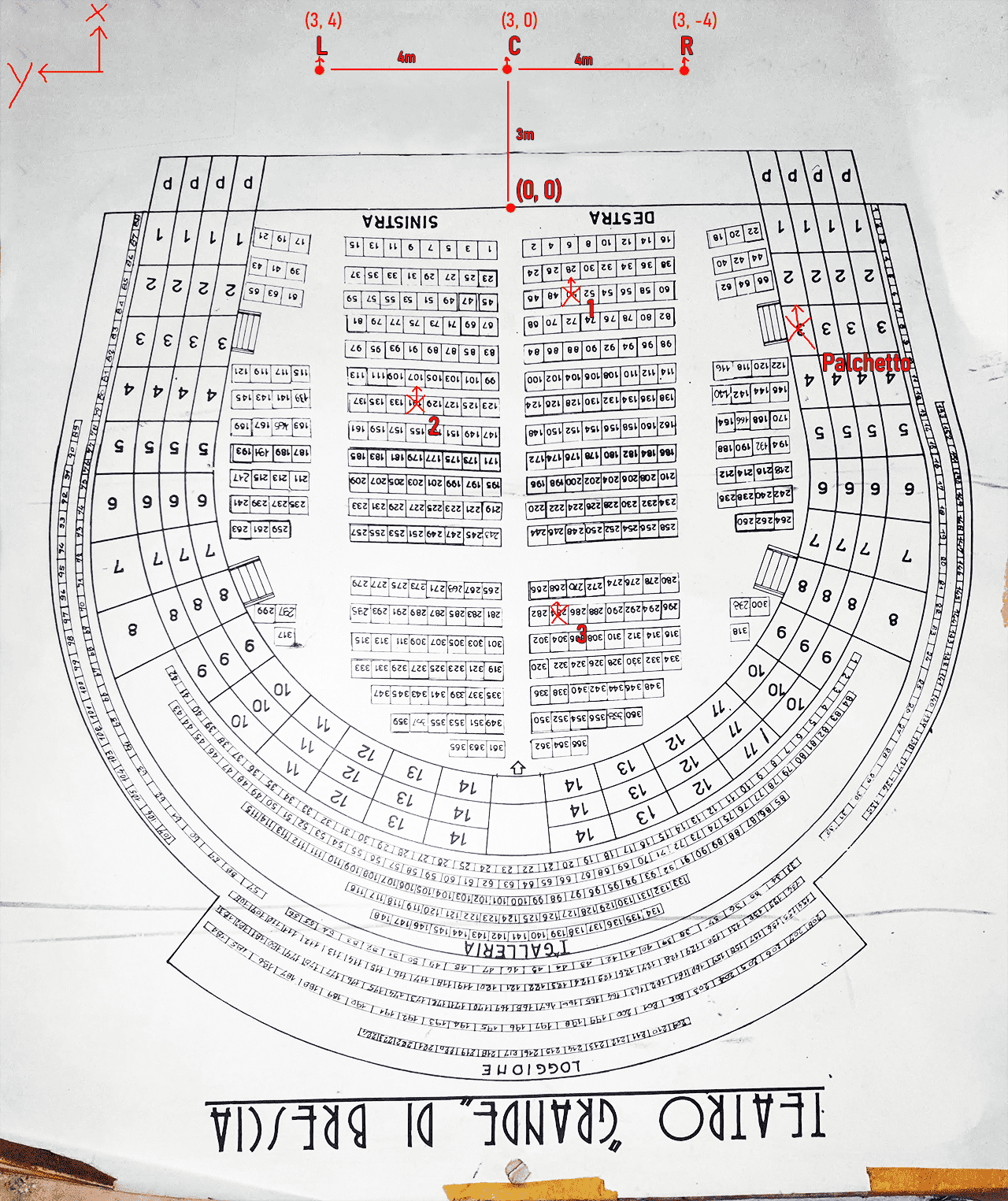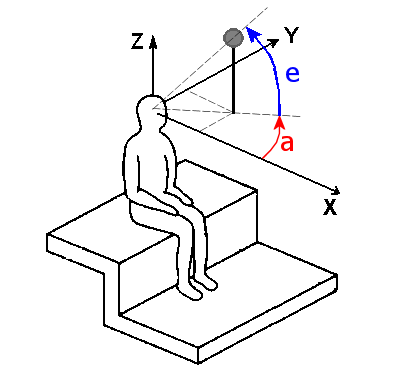How to perform MIMO acoustical measurements in the Sipario Project
Test positions
We generally take three source positions and three receiver positions, plus one in a side box if time allows.

Both the microphone and the speaker must always be oriented parallel to the x axis, which is the vertical axis of this image. That is to say, it's the longitudinal axis of the room. We are following ISO 2231, so with the right-hand rule our middle finger is the y axis, the thumb is the z axis, the index is the x axis.

We follow this same convention for which side of the room is the left and which one is the right. For each position of both source and receiver we should measure and take note of the cartesian coordinates, based on a center point set at the center of the edge of the stage.
This is not the same as in the Artsoundscapes project, where source and microphone always face each other.
Test signals and gains
We are using a matrix of exponential sine sweeps that are already processed so that they are emitted as Ambisonics spherical harmonics. This is in third-order Ambisonics, so there are 16 sweeps. For reference the first sweep is the W, or omnidirectional. This particular signal has been equalized by order, as follows:
- Order 0: +24dB
- Order 1: +24dB
- Order 2: +12dB
- Order 3: 0dB
This is done for signal-to-noise ratio reasons, and it must be reversed before processing. It should also be noted that the signal to noise ratio is pretty low at the third order. The test signal is available here.
The output gain on the Orion is usually set to -25dB, and the Eigenmike gain is set to +12dB. The important thing is of course to log any changes.